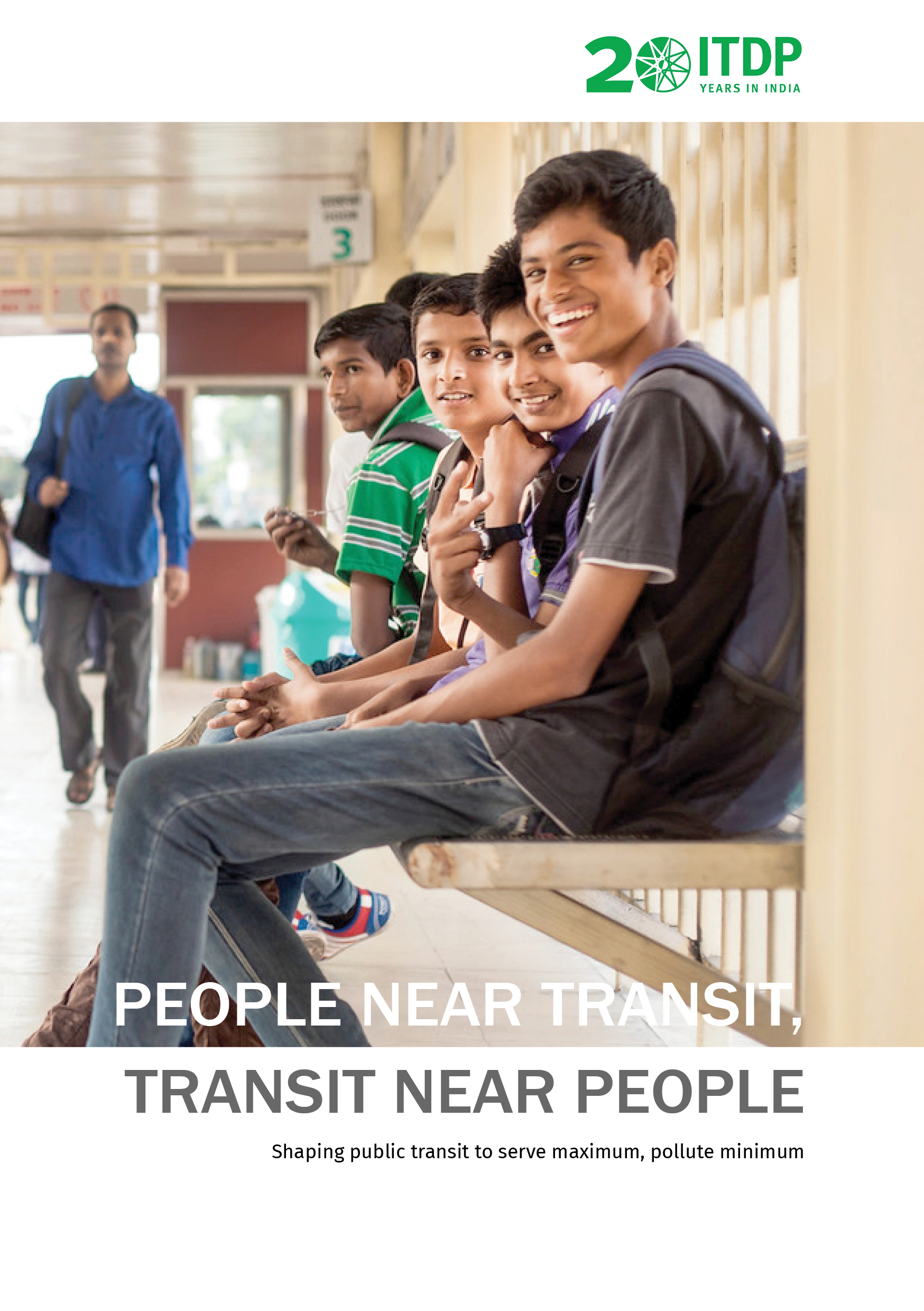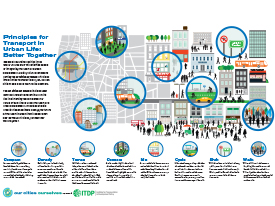The People Near Transit (PNT) report establishes the levels of urban transit services in Pune Metropolitan Region and the accessibility gaps that affects its residents.

by
The People Near Transit (PNT) report establishes the levels of urban transit services in Pune Metropolitan Region and the accessibility gaps that affects its residents.

Dockless bikeshare, a mode of transportation that emerged in China only four years ago, needs to be regulated and integrated into urban mass transit systems rather than exist as a separate private entity to reach its potential, according to a new policy brief from the Institute for Transportation and Development Policy (ITDP).
ITDP has outlined five key elements for a successful dockless bikeshare system, and has found that a number of cities have already embraced these best practices.
The policy brief and accompanying publicity materials identify five key components of any system: Five Ways to Win at Dockless Bikeshare. A growing number of cities have prospered by implementing these elements, while other cities have experienced more disruption than smooth travels due to minimal oversight of dockless bikeshare. For example, without clearly communicated guidelines on how best to park the bicycles, dockless bikes have raised ire for blocking rights of way and other public spaces.

Transit-oriented development (TOD) brings compact, mixed-use development within walking distance of high capacity rapid transit.
TOD features vibrant streetscapes, pedestrian-oriented built forms, and land use characteristics that make it convenient and safe to walk, cycle, and use public transport.
This poster demonstrates the principles for good Transit Oriented Development and the essential features required for it.

This infographic highlights the key features of BRT essential to any BRT system. These elements ensure that BRT systems have high operating speeds and provide a good customer experience.

The Bike-Share Planning Guide establishes many important metrics and principles for evaluating bike-share systems around the world. Although each city makes bike-share its own, adapting it to the local context, many of the most successful systems share certain common features.
The Guide provides important standards and insights into best practices for building bike-shares, and this infographic highlights five of the most important metrics and performance indicators for achieving a successful system.

Current street design practice in India is often based on a vision of high-speed motorized mobility that does not take into account the variety and types of activities that actually take place in Indian streets. While streets are often designed from the centerline outward, Better Streets, Better Cities urges planners to explore an alternate approach that prioritizes the needs of pedestrians and cyclists.

In most Indian cities, parked vehicles dominate the public realm by consuming more and more of our cherished parks, plazas, streets and common spaces. Each parking space consumes from 15m2 to 30m2 and the average motorist uses two to five different parking spaces every day. Hence, many cities are questioning the current parking policy which dedicates scarce public space to car parking.
Parking management is a critical tool for achieving a variety of social goals. This booklet ‘Park it Right’ is a brief illustrated guide to principles of on-street parking management.

These posters were made for a workshop on Transit Oriented Development in India in March 2013, and are illustrations of ITDP’s Eight Principles for Transport in Urban Life.
They include photos and descriptions of the various objectives and metrics of the eight principles: Walk, Cycle, Connect, Transit, Mix, Densify, Compact, and Shift.

The new report, A Global High Shift Scenario, produced by from ITDP and the University of California, Davis, is the first study to examine how major changes in transport investments worldwide would affect urban passenger transport emissions, as well as the mobility of different income groups. This infographic demonstrates, by region, the emissions savings possible from a high shift toward low-carbon transport.

The 8 Principles for better streets and better cities highlight the key aspects of transport-oriented development that lead to good growth. For more information about these principles and best practices in TOD, see ITDP’s TOD Standard.